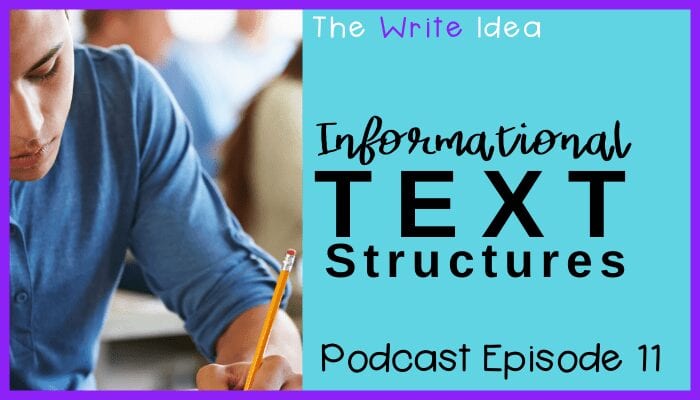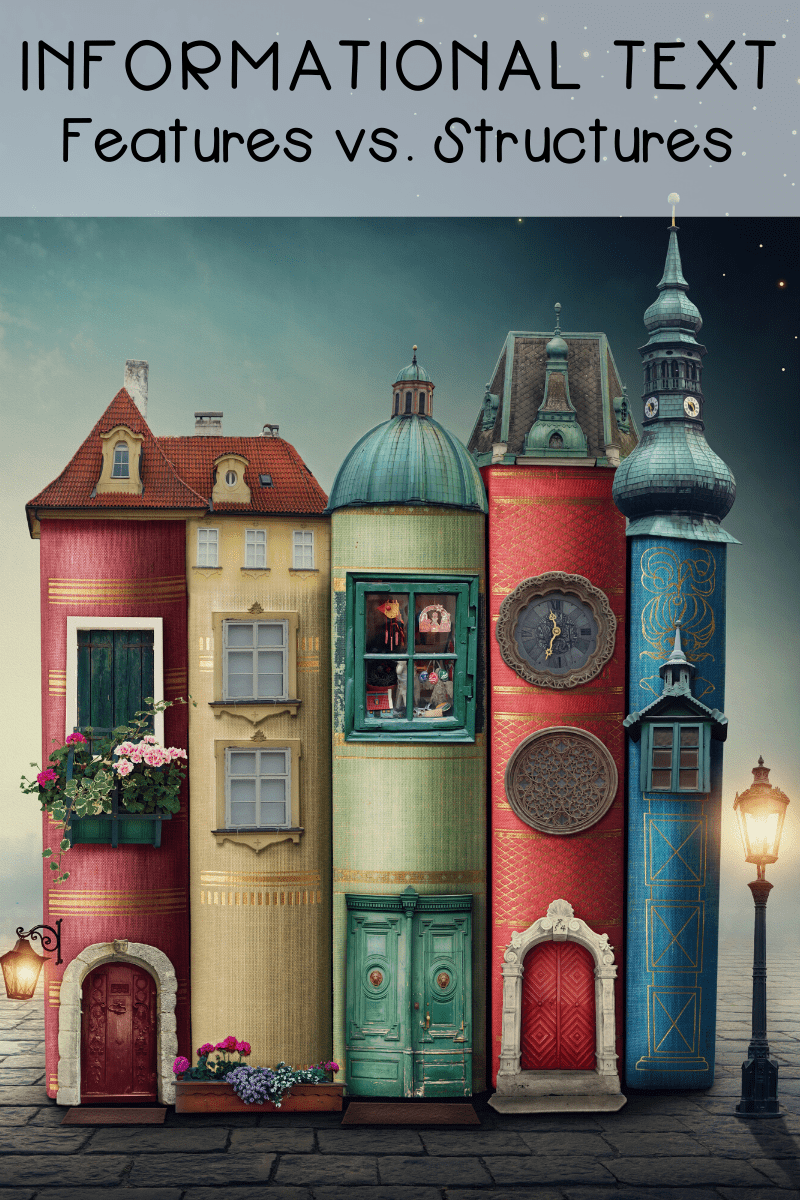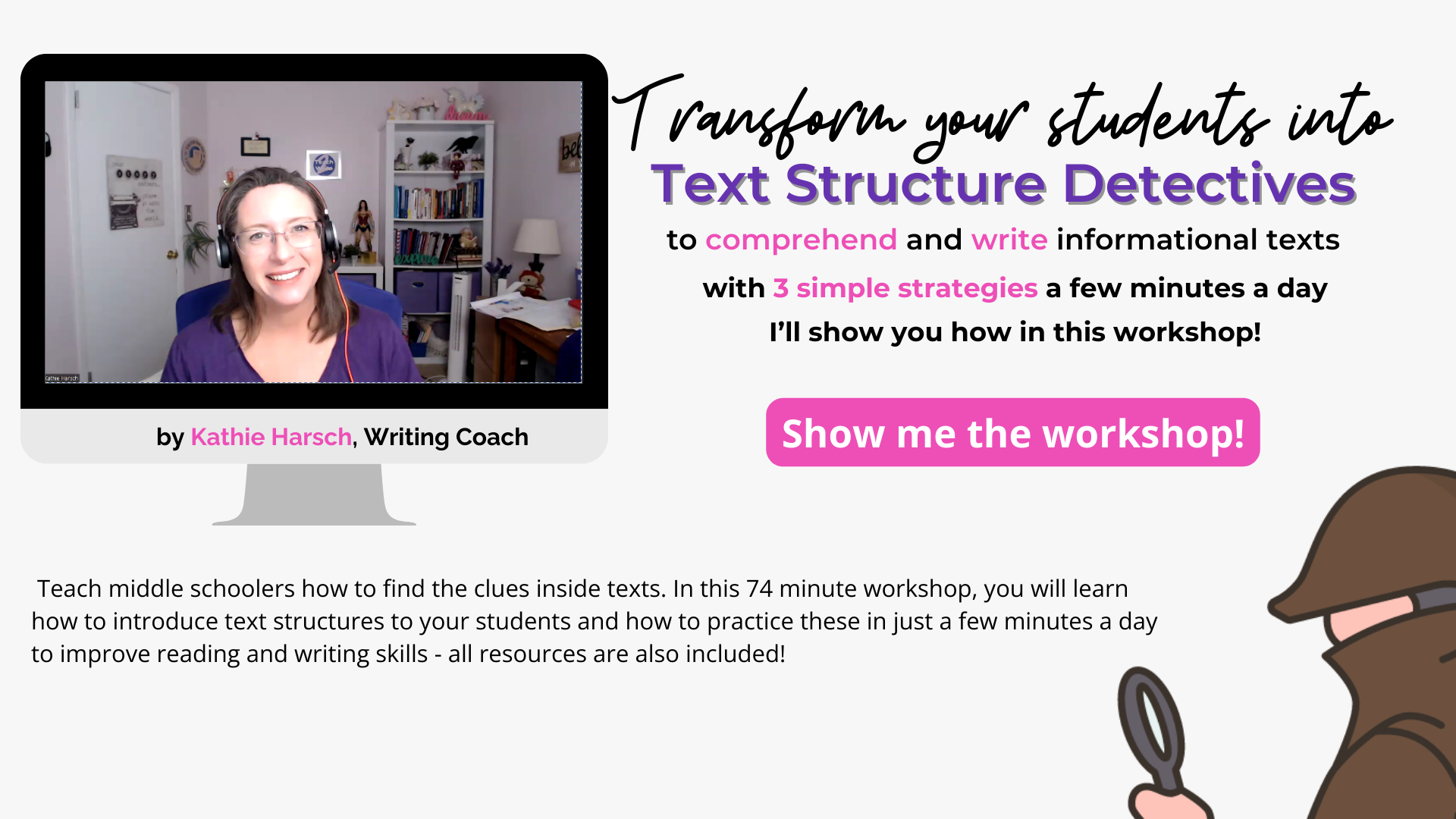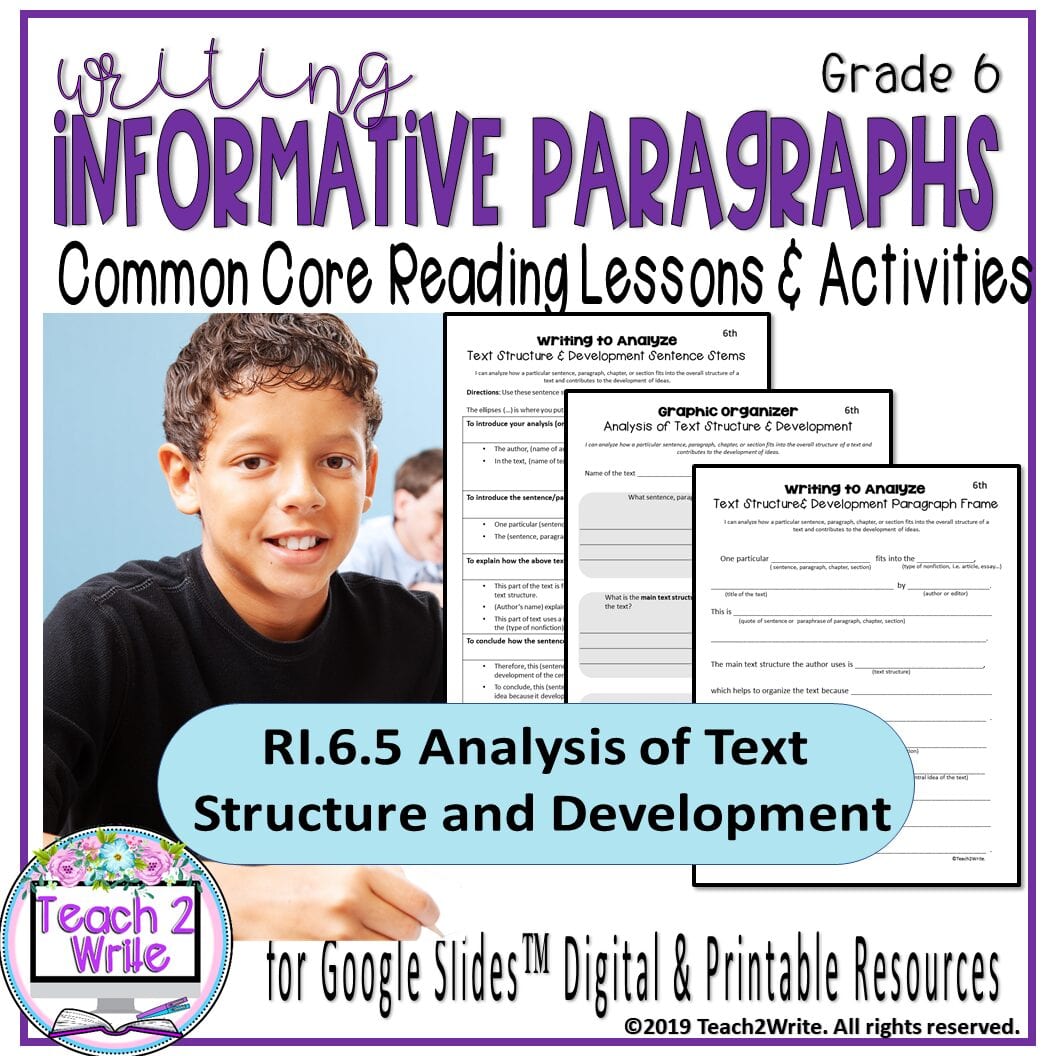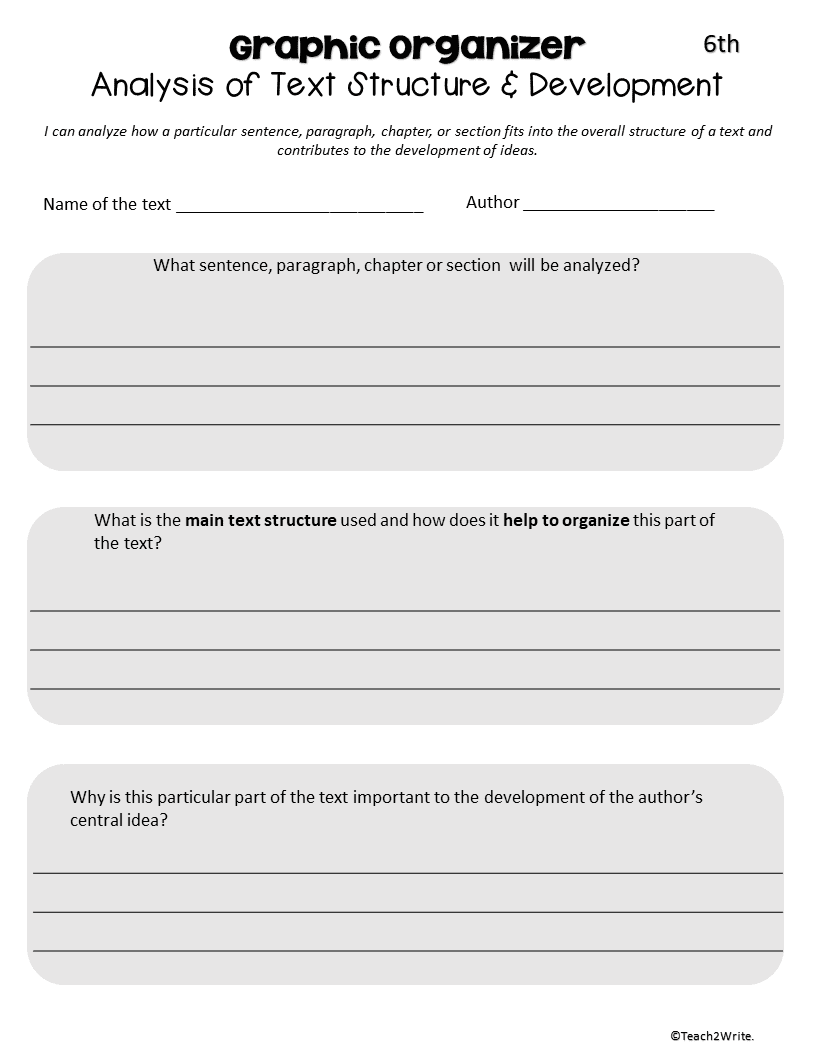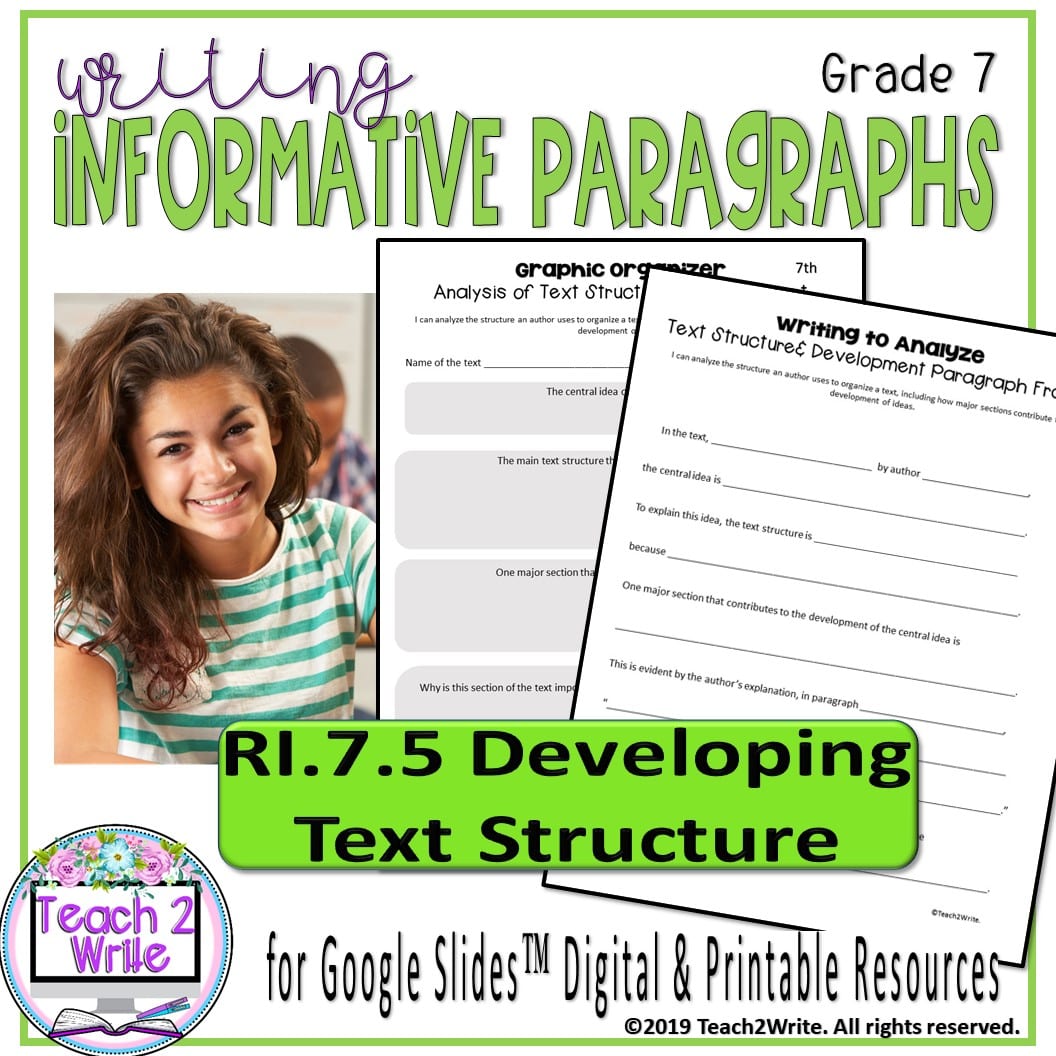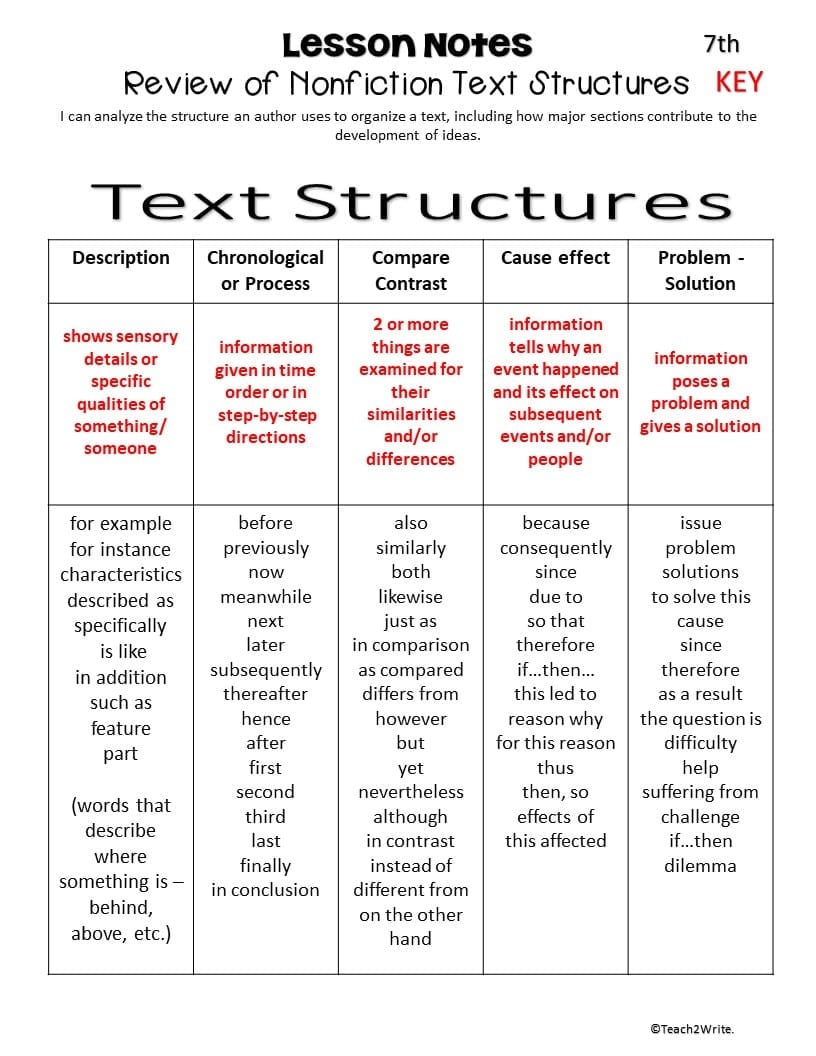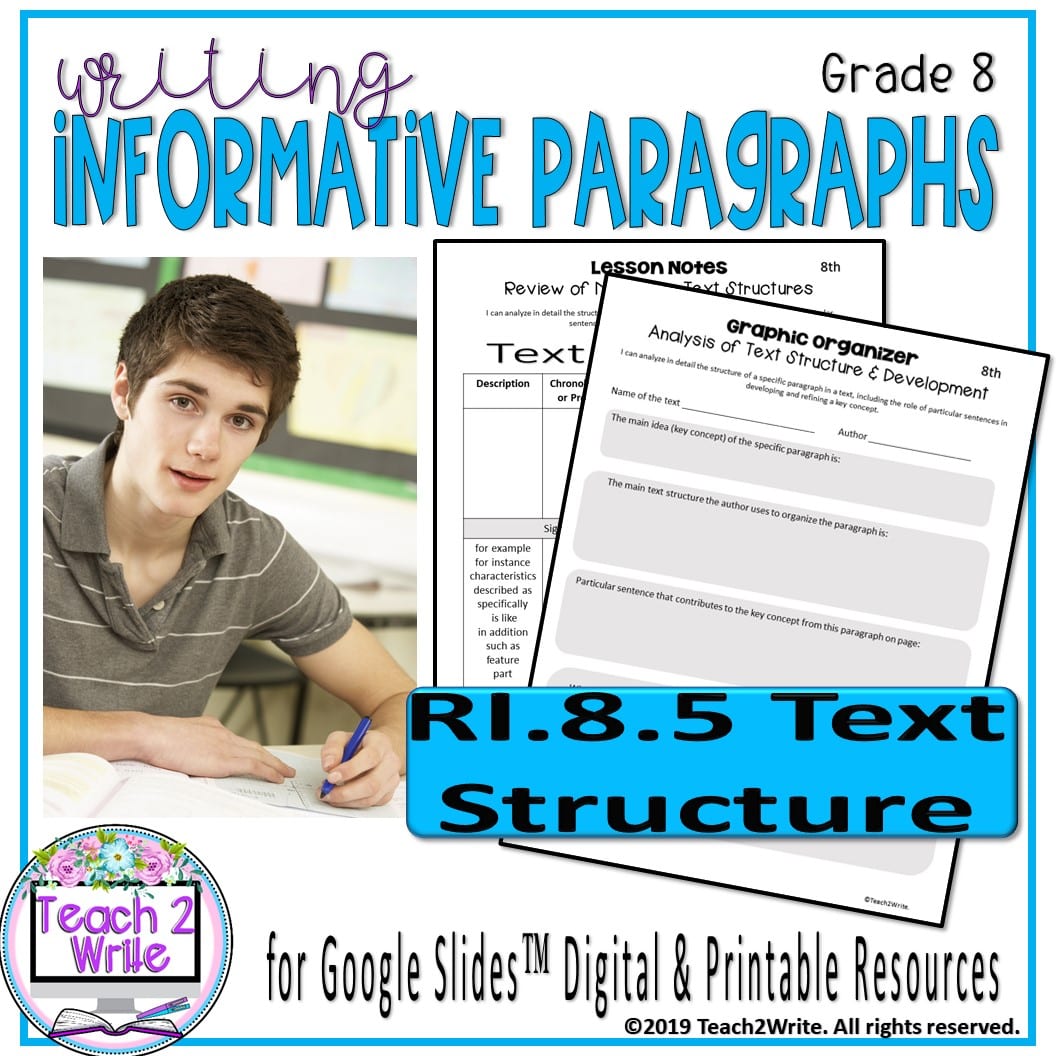Informational text structures are the organizational patterns all writers must learn. Most people read and write for informational purposes, so it’s imperative that we teach our students these building blocks of writing.
Before we get started though, I want to talk about the differences between text features and text structures. Students often confuse these vital elements of a text. So, I use this analogy: writing an informational text is a lot like building a house.
Informational Text Features
The outside of a house has certain features like paint color, trim, and maybe a garden. These features make the house visually attractive to a potential buyer. Text features are like the paint and trim of a house, they are visually attractive and more appealing to a reader.
Text features present the reader with visual clues about how a text is organized. Some examples of text features are:
- Headings and subheadings
- Graphs and images
- Captions that explain graphs and images
- Bold or italicized words
- White space or the spaces around paragraphs and the edges of a page.
However, a house needs more than just paint and trim. There needs to be something inside, too. For example, if the house is not framed properly, then the walls will cave in, or the rooms may not flow well from one space to another.
Nonfiction Text Structures
Like houses, texts must have a framework, too. This framework allows the writer to build words around it, much like a carpenter builds walls around the frame of a building.
Also, just like houses can have different layouts where the rooms go, texts also have different organizational layouts. Your writing must be organized, so it has a purpose and flow for your reader. That’s why it’s important to learn text structures. So, you can build a text that readers will understand.
Human brains crave organizational patterns. This ability to find and use patterns is actually what makes human communication possible. We wouldn’t understand each other without organizational patterns, or structures, in our language.
Five Basic Informational Text Structures
There are five basic informational text structures. Those are:
- description
- compare/contrast
- cause/effect
- sequence/timeline
- problem/solution
Each structure gives the reader a unique perspective about a topic, and each structure has a purpose. Teaching text structures can be as easy three simple strategies you can implement in your classroom in just a few minutes a day. To find out more about how, click here.
Decisions writers must make about text structures
Before a writer can even choose a text structure, the writer needs to know the topic, intended audience and purpose for writing. These decisions can help you to figure out what informational text structures you’re going to need to explain or argue something.
For example, so far in this blog, I start with describing why text structures are useful and important to learn. Then, I compare/contrast text features and text structure. This section is sequential, telling what I did first, next and so on.
Teaching informational text structures
Even though students learn text structure in elementary school, I still explicitly teach the 5 basic text structures to all of my students. We spend a week on each structure because we do both reading and writing activities and a project on the final week.
Students use what they learn to research and write an informational report on a topic of their choice.
1. Define and explain analysis.
I explain how analysis allows us to take something apart to look at how some of the parts contribute to a whole thing. We analyze objects first, and then we analyze a short text. Additionally, we discuss why this matters. I also explain that writers use different text structures to analyze a piece of text. I start with descriptive analysis, since that is the most obvious, and my students begin description at the beginning of the school year.
2. Introduce the transition words
I give students four or five sentences, and they identify the transition words within the sentences. If students need help with transition words, I give those students a list.
Then, students read the sentences with and without the transition words.We discuss how the transition words help the reader to recognize the organizational pattern of the text and also how this recognition helps the reader to understand the text better.
I list the 5 types of organizational patterns in a presentation, and students figure out which organizational pattern is being used in each sentence. If you make it into a game, then it’s way more engaging for students.
We also discuss what a reader needs in order to understand a paragraph, and then students use this rubric to evaluate another set of sentences or paragraphs..
3. Introduce a graphic organizer for ONE text structure
Next, I give students a paragraph to read and a graphic organizer based on one of the five informational text structures. We analyze the paragraph, using the graphic organizer. Then, on the next day, students use the graphic organizer to plan and write about their own topic.
For example, when I introduce informative description, we discuss what makes a valuable, readable description. Next, I give students a rubric and we discuss how the rubric contains what students found valuable and helpful.
For description, students use a hierarchical graphic organizer, where the topic is at the top and the subtopics are connected beneath, with details flowing out beneath each subtopic. (You could also use a mind map.) They draw these organizers themselves into their writing journals, which saves on copies and also teaches them note taking strategies.
4. Graphic organizers serve as both tools for analysis and planning writing
A graphic organizer will serve as both a tool for analysis as well as a tool for writing.
After reading, students analyze the text by filling out the graphic organizer and discuss in small groups why they wrote information in certain places. They highlight or underline the transition words they find.
Following this, students use the same graphic organizer to create their own descriptive paragraph about a chosen topic. We practice this a few more times and use a rubric to evaluate their descriptions. Then, we move on to the next text structure.
5. Assign a summative essay or project.
Once I’ve taught all of these structures, students use the graphic organizers to gather evidence for an essay or project. When we start reading longer informational texts, I also point out to students (or allow them to discover) that most texts are made up of several different text structures.
Also, if I haven’t taught introductions and conclusions, then I teach how to write those. Students then use all 5 of the graphic organizers to gather information and decide which they will use for their project.
Broad themes I’ve used to teach informational text structures
Here are some broad themes, I’ve used for projects, and or teaching the organizational structures:
- 6th grade endangered animals
- 7th grade Middle Ages or Child Labor
- 8th grade Civil Rights Era or the Holocaust
- TedX Talks where students choose a topic themselves and present it to the class (in small groups or in front of the class – their choice)
These themes were based on the curriculum I taught at the time for Collections Grade 6. For example, our 6th grade textbook contains a unit on animal intelligence and another section that argues for and against zoos. I used these as the reading materials for introducing the text structures. Then, I assigned the endangered animals project at the end of the unit.
6. Follow up with argumentative writing
I teach argumentative writing after expository because now students have had the opportunity to learn logos and ethos from learning about text structures. Now, all I have to do is teach the pathos part of writing an argument. I never learned ethos, pathos and logos in school. So, when I Googled methods of persuasion, I discovered this is how teachers teach argument. They teach logos, ethos, pathos.
Logos is the argument’s organizational pattern, while ethos gives the argument credibility from citing credible sources. Pathos is the persuasive/opinion part of the argument.
Informational Text Structures Writing Paragraphs Resources
Informational text structure resources for CCSS RI.6.5, 7.5, and 8.5 are now available in my TPT store. In each informational text structure resource, you will find:
Included in these resources, you’ll find the proven strategies I’ve used over and over again in my classroom:
Google SlidesTM compatible link to Google file of worksheets that can be used again and again with different informational texts along with a Printable activities PDF, which contain:
- Poster for Reading Informational Skill
- Lesson Plan for how to implement these resources
- Learning Scale/Rubric
- Reading Informational Text Vocabulary activity and concept notes with KEYS
- Graphic organizer that analyzes the informational text with this standard
- Paragraph Frame for the writing about the informational text for this standard
- Sentence Stems for Written Responses for this standard
These resources help you scaffold your students with classroom-proven strategies through the process of writing informative paragraphs that can be later grouped together into essays.
1. Read any selected informational text.
2. Introduce the rubric and academic vocabulary
3. Students fill out the graphic organizer, and then they can either use the paragraph frames or the sentence stems as needed for scaffolded support.
4. Conference with students about their progress as they continue to practice writing for this standard.
Improve comprehension and writing skills
Through teaching informational text structures, your students will gain the necessary study and writing skills they’ll need for the rest of their lives.
I can’t tell you how many former students thank me for the writing skills I taught helped them in high school and college. All I did was introduce them to 5 simple text structures and showed them how to use them. However, these strategies made a world of difference in their note-taking and writing.

